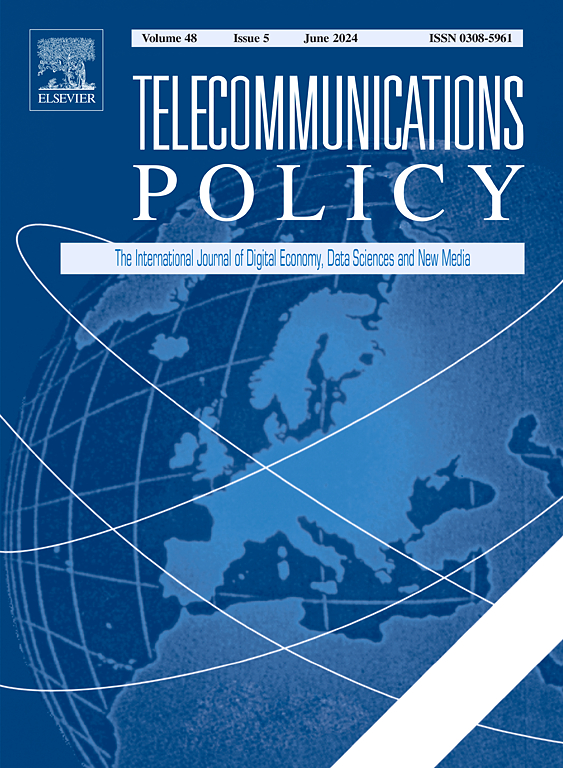通过posset方法解开艾米利亚-罗马涅地区的数字鸿沟
IF 6.4
2区 管理学
Q1 COMMUNICATION
引用次数: 0
摘要
本研究利用DESIER颗粒数据(DESIER是对DESI的市级调整)来分析艾米利亚-罗马涅各城市之间的数字鸿沟。本研究利用posset方法,通过对2022年至2024年的数字差距、干预领域和数字化动态进行详细检查,克服了传统综合指数的局限性。尽管艾米利亚-罗马涅是意大利数字化程度最高的地区之一,但分析显示,该地区的领土碎片化程度很高。城市按数字化程度从高到低分为四类(先驱者、创新者、探索者和初学者),突出了明显的城乡差距和内部差距。连通性被认为是数字化最具影响力的维度,而人口规模、城市化、收入和就业率被认为是正向影响城市数字化发展前景的结构性因素。该研究强调了数字化的多维性,倡导采取平衡的、对环境敏感的政策,以缩小差距,增强韧性。尽管存在一些局限性,但该研究为促进包容性数字化战略提供了一个可复制的框架和可操作的见解。本文章由计算机程序翻译,如有差异,请以英文原文为准。
Unravelling digital divides in the Emilia-Romagna region through the poset approach
This study leverages granular DESIER data - a municipal-level adaptation of DESI - to analyse the digital divide across Emilia-Romagna municipalities. Using the poset methodology, this study overcomes the limitations of traditional composite indexes by enabling a detailed examination of digital disparities, intervention areas, and digitalization dynamics from 2022 to 2024. Despite Emilia-Romagna being one of the most digitalized regions in Italy, the analysis reveals significant territorial fragmentation. Municipalities are classified into four digitalization categories from the most to the least digitalized (Pioneers, Innovators, Explorers, and Beginners), highlighting pronounced urban-rural disparities and internal gaps. Connectivity emerges as the most influential dimension of digitalization, while population size, urbanization, income, and employment rates are identified as structural factors positively influencing municipal digital advancement prospects. The study highlights the multidimensional nature of digitalization, advocating for balanced, context-sensitive policies to reduce disparities and foster resilience. Despite some limitations, the study offers a replicable framework and actionable insights for promoting inclusive digitalization strategies.
求助全文
通过发布文献求助,成功后即可免费获取论文全文。
去求助
来源期刊

Telecommunications Policy
工程技术-电信学
CiteScore
10.80
自引率
12.50%
发文量
122
审稿时长
38 days
期刊介绍:
Telecommunications Policy is concerned with the impact of digitalization in the economy and society. The journal is multidisciplinary, encompassing conceptual, theoretical and empirical studies, quantitative as well as qualitative. The scope includes policy, regulation, and governance; big data, artificial intelligence and data science; new and traditional sectors encompassing new media and the platform economy; management, entrepreneurship, innovation and use. Contributions may explore these topics at national, regional and international levels, including issues confronting both developed and developing countries. The papers accepted by the journal meet high standards of analytical rigor and policy relevance.
 求助内容:
求助内容: 应助结果提醒方式:
应助结果提醒方式:


